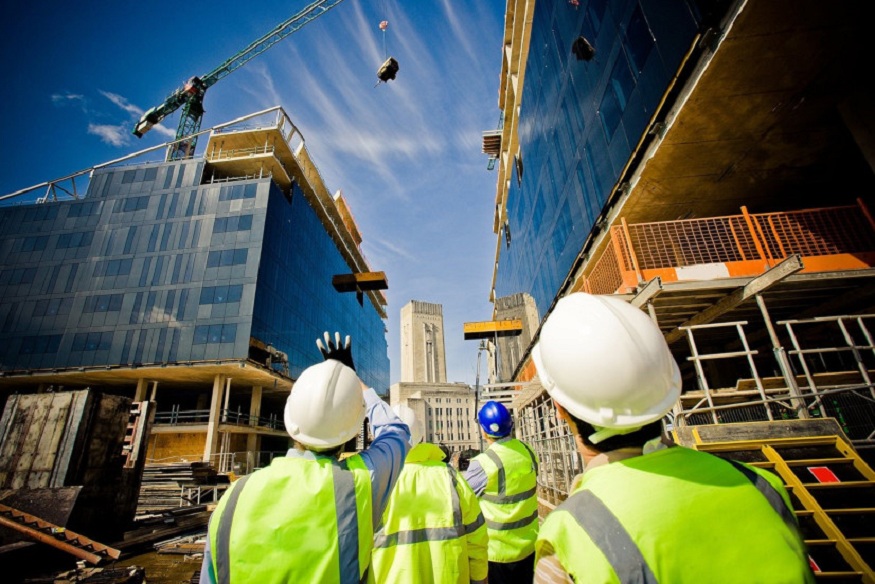Different types of waste and residual materials accumulate on a construction site during construction, demolition or renovation work. This so-called construction waste and mixed construction waste must be disposed of in accordance with the regulations. You can read here which regulations apply, what they regulate in each case and how to properly dispose of construction waste such as bricks, concrete or plaster.
Legal regulations for the disposal of construction rubble
,The European Framework Directive of 2008 , the ordinance relating to the management and remediation of polluted soils in Brussels and the Decree relating to waste in Wallonia regulate the way in which construction waste must be properly separated and disposed of in Belgium. Note that it is strictly forbidden to burn waste in the open air, to abandon it in nature, and above all to mix hazardous waste with other types of waste. As a builder, you will need to provide the necessary construction waste containers and bins as soon as the construction site is set up: in general, all construction waste must be collected and transported separately.
Construction waste can be disposed of by public waste disposal companies, which set up disposal containers, big bag transport bags or tipping bottom containers of various sizes and color coding systems, and who collect them again and recycle them as building materials. In addition, it is also possible to hand over construction rubble and other residual materials to private companies or recycling plants and dispose of them according to regulations.
What waste is considered construction waste?
Construction waste includes all solid, non-combustible construction waste consisting primarily of mineral materials .
These materials can be disposed of as unmixed construction waste:
However, construction waste can not contain substances harmful to health , such as asbestos or tar: if this is the case, it must be treated as hazardous waste and disposed of separately from other construction waste. If construction waste is also mixed with more than 10% foreign content, it is classified as mixed construction waste, which must also be disposed of separately.
Earth and soil excavation
Excavated soils at construction sites should be differentiated according to the layers of soil removed. In this way, brown earth, silt and gravel, for example, can be better sorted and recycled. Excavated earth and soil must be disposed of in specific recycling facilities. In addition, the substrates must be differentiated according to contaminated and non-contaminated materials : soils contaminated with pollutants must be disposed of separately so that they do not pose a risk to health and the environment. Examples include track ballast and soils impregnated with oil and gasoline.
road construction
Road surface that has been removed or broken can be classified as unpolluted or polluted road debris, depending on the materials it contains. Bituminous and mineral pavements are among the non-hazardous fragmented materials here. These can be recycled without any problem. However, materials that contain even the smallest amounts of pitch, such as tar, are classified as contaminated: these materials pose a high risk to the environment, which is why contaminated road debris is subject to notification obligations and monitoring and should be disposed of as hazardous waste.
Disposal of mixed construction waste
Mixed construction waste is construction waste that is not sorted by type and therefore cannot be easily separated and recycled. These materials often have to be stored in landfills or energetically recycled in waste incineration plants. The following materials can be disposed of together in a container as mixed construction waste:
Special forms for construction waste
Recyclable materials and artificial mineral fibers (AMF) ( such as refractory ceramic fiber ) include all construction waste that can be fully recycled. For example, polystyrene and packaging materials as well as paper and cardboard. However, scrap metal can also be fully recycled.
In addition, according to Commission Directive 97/69/EC of 5 December 1997 many FMA insulation elements such as fiberglass and rock wool are also part of construction waste which must be disposed of separately: these materials are considered carcinogenic if manufactured before 2000. Due to thehazardous fine fiber dust, these building materials should be collected and disposed of separately in dustproof, tear-proof bags.
What is construction waste?
Construction waste includes all solid, non-combustible construction waste that may be produced during construction, demolition or renovation work. Materials often consist of mineral substances, which can be a single compound or mixed. Due to its structure, construction waste must be clearly distinguished from mixed construction waste.
What is mixed construction waste?
Mixed, or mixed, construction waste cannot be separated by type. Also, building materials are often not safe to dispose of. Mixed construction waste is more difficult to recycle than construction waste, or in some cases cannot be recycled at all. The materials must therefore be stored in landfills or recycled for energy in waste incineration plants. Mixed construction waste includes, for example: Wood scraps, pipes, cables, plasterboard, metals and plastics.
Where to put the rubble of a building?
Small amounts of construction rubble can be handed over to regional waste disposal companies. If, on the other hand, a lot of rubble accumulates, disposal contracts can be concluded with public or private recycling companies. It is also possible to properly dispose of accumulated building materials at your own disposal or recycling facilities.
Disclaimer: Please note that the regulations mentioned here are only a selection of the main legal requirements. For further information, please refer to the legislation and legal texts possibly listed here and, where applicable, to other collections of regulations and official texts. In case of doubt, experts can and must also be consulted for a concrete and adequate application of these regulations in the company.


